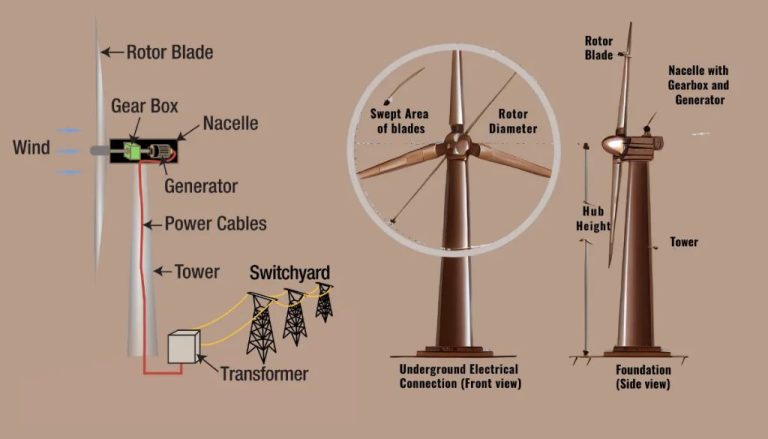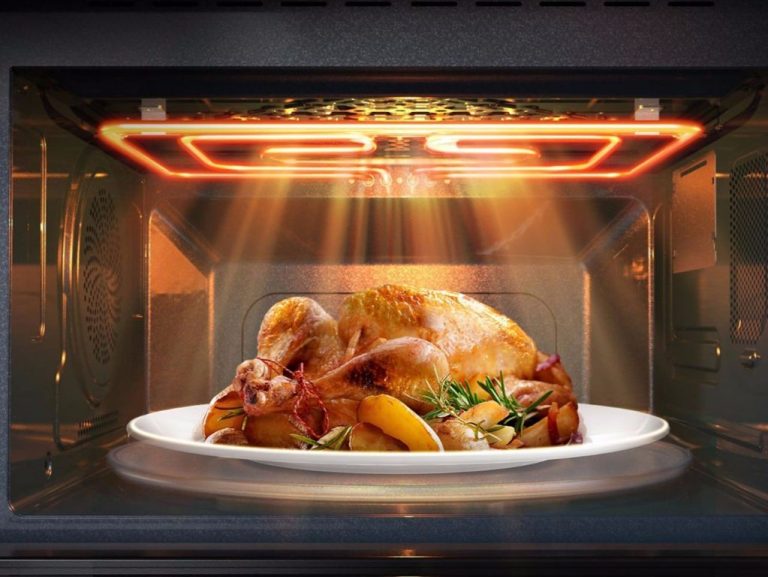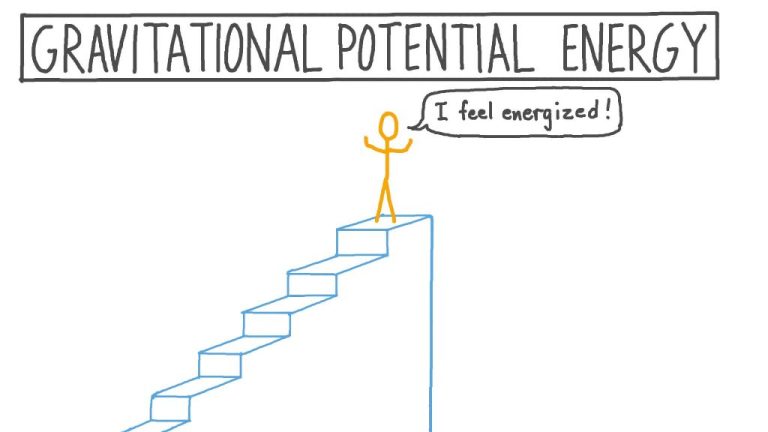How Much Is 1,000 Kilowatts?
What is a kilowatt?
A kilowatt (kW) is a unit of power that measures the rate of energy use or production. Specifically, one kilowatt equals 1,000 watts. Power is measured in watts and energy is measured in watt-hours. While watts measure instantaneous power, kilowatts measure the amount of power used or produced over time.
For example, an appliance like a microwave oven might draw 1,000 watts of power. Running that microwave oven for 1 hour would use 1,000 watt-hours of energy. The microwave’s power rating is described as 1 kilowatt because it uses 1,000 watts continuously when operating.
So in summary, a kilowatt is a unit to measure power or the rate of energy consumption. It can be thought of as instantaneous power draw, while kilowatt-hours measure accumulated energy use over time.
Kilowatt vs Kilowatt-hour
A kilowatt (kW) is a unit of power that measures the rate of energy flow per second. For example, a device that uses 1,000 joules of energy per second requires 1 kilowatt of power. Power is similar to the speed or flow rate of energy consumption.
A kilowatt-hour (kWh) is a unit of energy that measures the total amount of energy used over time. One kilowatt-hour equals using 1 kilowatt for one hour, or 1,000 watts for one hour, or any other combination that multiplies to 3,600,000 joules of energy. Energy usage is akin to the total volume of a liquid that has passed through over time.
In summary, power (kilowatts) measures the rate or speed of energy flow, while energy (kilowatt-hours) measures the total volume used over time. Power is instantaneous, while energy accumulates over time based on power usage.
Converting Kilowatts to Kilowatt-Hours
When we talk about power usage over time, we use kilowatt-hours instead of kilowatts. A kilowatt-hour is the amount of energy you would use by keeping a 1 kilowatt appliance running for 1 hour. To convert kilowatts to kilowatt-hours, you simply multiply the number of kilowatts by the number of hours used.
For example, if you use a 1,000 watt appliance for 1 hour, you will use 1,000 watts x 1 hour = 1,000 watt-hours = 1 kilowatt-hour. If you use that 1,000 watt appliance for 10 hours, you will use 10 kilowatt-hours of energy (1,000 watts x 10 hours).
So in general, to convert kilowatts to kilowatt-hours, you take:
Kilowatt-hours = Kilowatts x Hours Used
This formula allows you to determine your energy usage over time based on the power draw of an appliance or device.
1,000 Kilowatts in Kilowatt-Hours
To convert kilowatts (kW) to kilowatt-hours (kWh), you need to multiply the kilowatts by the number of hours used. Here is the formula:
Kilowatt-hours = Kilowatts x Hours
So for 1,000 kilowatts:
1,000 kW x 1 hour = 1,000 kWh
Therefore, 1,000 kilowatts used over the period of 1 hour is equal to 1,000 kilowatt-hours.
If 1,000 kW was used over the period of 10 hours, the math would be:
1,000 kW x 10 hours = 10,000 kWh
So 1,000 kilowatts used over 10 hours equals 10,000 kilowatt-hours.
The key point is that to convert kilowatts to kilowatt-hours, you simply multiply the kilowatts by the number of hours that amount of power was used for. This shows the total energy usage over that time period.
Kilowatt-hours to energy usage
To understand how much energy 1,000 kilowatt-hours represents, it helps to look at some examples of typical energy use:
- Lighting – The average household uses about 10,950 kilowatt-hours per year for lighting. So 1,000 kilowatt-hours would power the lighting in an average home for about 3 months.
- Refrigeration – The average refrigerator uses about 500 kilowatt-hours per year. 1,000 kilowatt-hours would run the average refrigerator for 2 years.
- Electric oven – Using an electric oven for 1 hour consumes around 1.5 kilowatt-hours. With 1,000 kilowatt-hours you could use an electric oven for about 667 hours or 28 days.
- Clothes dryer – A typical electric clothes dryer uses around 3,000 kilowatt-hours per year. 1,000 kilowatt-hours would power the average clothes dryer for 4 months.
- Air conditioning – Central A/C in a 2,500 square foot home uses around 3,500 kilowatt-hours per year. 1,000 kilowatt-hours would run central air for about 3-4 weeks.
So 1,000 kilowatt-hours represents a significant amount of electricity – enough to power major home appliances for months at a time. It’s equivalent to the average monthly energy use of an entire household.
Cost of 1,000 Kilowatt-hours
The cost of 1,000 kilowatt-hours depends on the average electricity rate in your area. Electricity rates are usually measured in cents per kilowatt-hour (kWh). The national average residential electricity rate is around 12 cents per kWh. However, rates can vary significantly by state, from about 7 cents/kWh in Louisiana up to over 30 cents/kWh in Hawaii.
To calculate the cost of 1,000 kWh, you simply multiply the rate per kWh by 1,000 kWh:
Cost of 1,000 kWh = Rate per kWh x 1,000 kWh
Using the national average of 12 cents per kWh:
Cost of 1,000 kWh = $0.12/kWh x 1,000 kWh = $120
So at the average electricity rate, 1,000 kWh would cost about $120. In states with higher rates like Hawaii or lower rates like Louisiana, the cost could range from around $70 up to $300 for the same 1,000 kWh usage.
For commercial and industrial customers, average electricity rates are usually lower, around 10 cents per kWh. So 1,000 kWh for a business would cost approximately $100.
Knowing the cost of 1,000 kWh is useful for budgeting your electric bill and understanding your energy usage and expenses.
1,000 Kilowatts for Businesses
To understand how much energy 1,000 kilowatts represents for businesses, it helps to look at some examples across different industries:
Manufacturing: 1,000 kilowatts is a significant amount of power for a manufacturing facility. It could run several assembly lines with multiple machines like grinders, presses, and conveyor belts. This much energy consumption would be typical for a medium or large scale manufacturing plant.
Office: For an office building, 1,000 kilowatts could provide electricity for hundreds of computers, lights, copy machines, elevators, phone chargers, and other equipment. A very large office complex would use this much power. The average office building uses around 20-30 kilowatts.
Restaurant: A 1,000 kilowatt commercial kitchen could power appliances like ovens, grills, fryers, refrigerators, dishwashers, vent hoods, and HVAC systems for a large restaurant or a cluster of smaller restaurants. Most average size restaurants operate with around 50-100 kilowatts.
Hospital: In a hospital, 1,000 kilowatts could supply emergency rooms, operating rooms, imaging machines, laboratories, offices, and wards. Large regional hospitals often consume over 1,000 kilowatts. Small local hospitals may use only 100-300 kilowatts.
In summary, 1,000 kilowatts represents a large, industrial-level amount of electricity. It could meet the needs of an entire manufacturing plant, large office, big restaurant cluster, or regional hospital. Understanding energy use on this scale helps businesses manage their power consumption and costs.
1,000 Kilowatts for Homes
For the average home, 1,000 kilowatts represents a significant amount of electricity. To put it into perspective, here are some examples of how much energy 1,000 kilowatts provides for common home uses:
- Lighting – 1,000 kilowatts could run 1,000, 100-watt lightbulbs for 1 hour.
- Appliances – 1,000 kilowatts could run a clothes dryer for over 80 loads, a dishwasher for over 120 loads, or a refrigerator for over 2 months.
- Electronics – 1,000 kilowatts could power a TV for over 5,000 hours, or over 200 days of continuous use.
- Air Conditioning – 1,000 kilowatts could run a medium-sized (3-ton) central AC system for around 8 hours.
- Electric Vehicle Charging – 1,000 kilowatts could provide over 25 full charges for an electric vehicle with a 40 kWh battery.
As you can see, 1,000 kilowatts goes a long way for powering the essential appliances, electronics, and services that a household depends on daily. It represents a substantial amount of electricity usage that could sustain an entire home for a significant period of time.
Saving 1,000 Kilowatts
There are many ways homes and businesses can save 1,000 kilowatts and reduce their energy usage. Here are some tips:
For Homes
- Replace all light bulbs with LEDs – This can reduce lighting costs by 75%
- Unplug devices when not in use – Appliances still draw energy even when turned off
- Seal air leaks around windows and doors – This prevents cooled/heated air from escaping
- Insulate attics and walls – Prevents heat transfer and reduces energy costs
- Install a programmable thermostat – Lower temperatures when away to save on heating
- Only run full loads in the dishwasher and washing machine
- Replace old appliances with ENERGY STAR models
For Businesses
- Switch to LED lighting
- Install occupancy sensors in low traffic areas
- Use ENERGY STAR office equipment
- Insulate warehouse or store walls and ceilings
- Seal loading dock doors
- Install high efficiency HVAC equipment
- Schedule HVAC to match business hours
- Utilize natural lighting when possible
With some simple changes, homes and businesses can significantly reduce their energy usage and save 1,000 kilowatts or more.
Summary
In this article, we have discussed what a kilowatt is, the difference between kilowatts and kilowatt-hours, how to convert between the two units, and what 1,000 kilowatts equals in practical terms.
The key points covered include:
- A kilowatt (kW) is a unit of power, referring to the rate of energy usage per unit time.
- A kilowatt-hour (kWh) is a unit of energy, referring to using 1 kW of power for 1 hour.
- To convert kilowatts to kilowatt-hours, you multiply the kilowatts by the number of hours.
- 1,000 kilowatts is equal to 1,000 kWh if used for 1 hour, or 1 megawatt-hour (MWh).
- For the average home, 1,000 kWh is approximately 1 month’s worth of electricity usage.
- For an industrial facility, 1,000 kW represents a large and constant demand for power.
In summary, knowing how to convert between kilowatts and kilowatt-hours allows us to better understand electricity usage and demand across different contexts. Evaluating usage in kilowatt-hours rather than just kilowatts provides a more practical measure of energy consumption.







